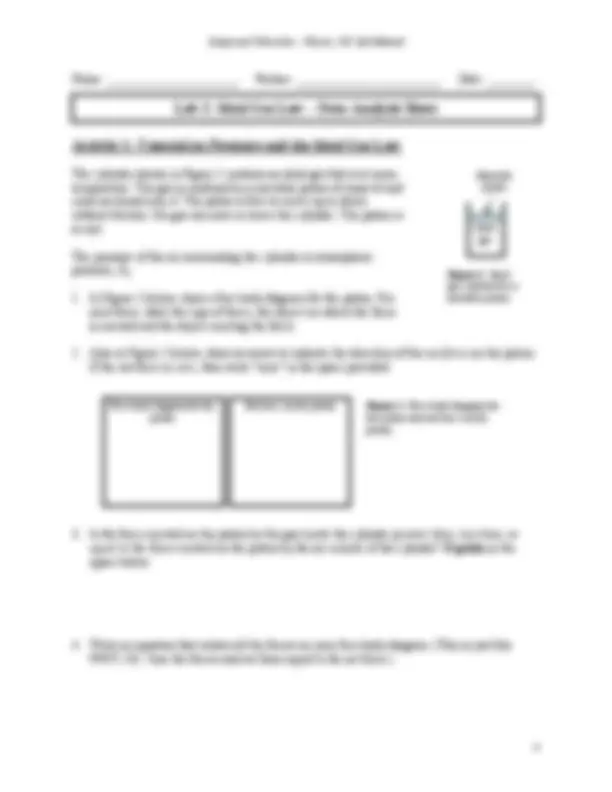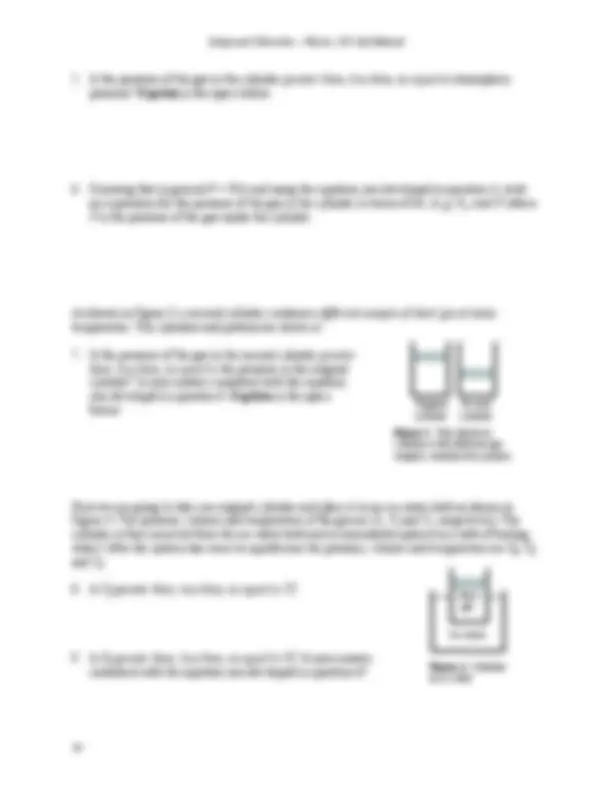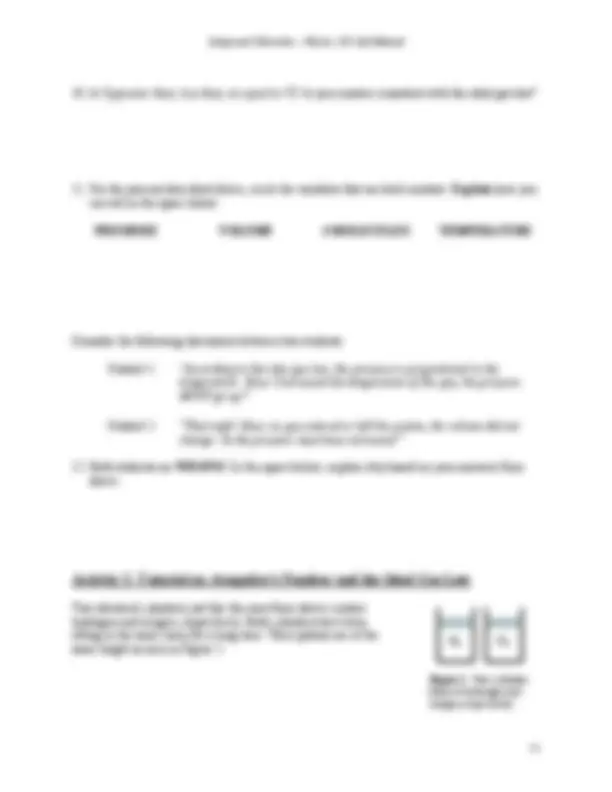





Study with the several resources on Docsity

Earn points by helping other students or get them with a premium plan


Prepare for your exams
Study with the several resources on Docsity

Earn points to download
Earn points by helping other students or get them with a premium plan
Community
Ask the community for help and clear up your study doubts
Discover the best universities in your country according to Docsity users
Free resources
Download our free guides on studying techniques, anxiety management strategies, and thesis advice from Docsity tutors
Material Type: Lab; Class: General Physics II; Subject: Physics; University: Longwood University; Term: Unknown 1989;
Typology: Lab Reports
1 / 6

This page cannot be seen from the preview
Don't miss anything!




The ideal gas law is an equation of state that describes the relationship between the pressure (P), the volume (V), the number of molecules (n) and the temperature (T) of an ideal gas. This relationship is as follows:
PV = nRT (1),
where R is a constant. Although real gases do not behave exactly like an “ideal” gas, they do behave similarly enough that we can use Equation 1 to describe their behavior. It is important to point out (and most students miss this insight) that Equation 1 describes the relationship between four different variables. Typically, students will only consider two variables at a time, such as pressure and volume, and ignore the other variables, such as number of molecules and temperature.
The ideal gas law also does not distinguish between different species of gases (such as hydrogen and oxygen). Many students attempt to account for the size or mass of individual molecules when dealing with ideal gases; however, the relationship described by Equation 1 references the number of molecules, and not the type of molecules.
In this lab, you will proceed through a series of “thought experiments” to help develop the concepts of pressure, temperature and volume. Activity 2 will focus on how the ideal gas law does not discriminate among species of gases.
The principles in this lab should reinforce the following concepts:
Activity 1: Tutorial on Pressure and the Ideal Gas Law
Equipment: computer with internet access
(1) Complete the Data Analysis sheet for Activity 1. (2) You may find the interactive simulation at the following website useful in answering these questions: http://phet.colorado.edu/new/simulations/. Click on “Heat and Thermo” and then click on “Gas Properties”. Running the simulation will allow you to “play” with the various thermodynamic variables and their influence on each other.
Activity 2: Tutorial on Avagodro’s Number and the Ideal Gas Law
Equipment: pencil, paper, brain
(1) Complete the Data Analysis sheet for Activity 1. (2) You may find the interactive simulation at the following website useful in answering these questions: http://phet.colorado.edu/new/simulations/. Click on “Heat and Thermo” and then click on “Gas Properties”. Running the simulation will allow you to “play” with the various thermodynamic variables and their influence on each other.
This lab adapted from Tutorials in Physics by Lillian McDermott. Contents copyright © Prentice-Hall 2002.
As shown in Figure 3, a second cylinder contains a different sample of ideal gas at room temperature. The cylinders and pistons are identical.
Now we are going to take our original cylinder and place it in an ice-water bath as shown in Figure 4. The pressure, volume and temperature of the gas are Pi, Vi and Ti, respectively. The cylinder is then removed from the ice-water bath and is immediately placed in a bath of boiling water! After the system has come to equilibrium the pressure, volume and temperature are Pf, Vf and Tf.
Figure 3: Two identical cylinders with different gas samples contained by pistons.
Original cylinder
Second cylinder
Figure 4: Cylinder in ice bath
Ideal gas
Ice water
PRESSURE VOLUME # MOLECULES TEMPERATURE
Consider the following discussion between two students:
Student 1: “According to the idea gas law, the pressure is proportional to the temperature. Since I increased the temperature of the gas, the pressure MUST go up!”
Student 2: “That right! Since no gas entered or left the system, the volume did not change. So the pressure must have increased.”
Two identical cylinders just like the ones from above contain hydrogen and oxygen, respectively. Both cylinders have been sitting in the same room for a long time. Their pistons are at the same height as seen in Figure 5.
Figure 5: Two cylinders filled w/ hydrogen and oxygen, respectively.